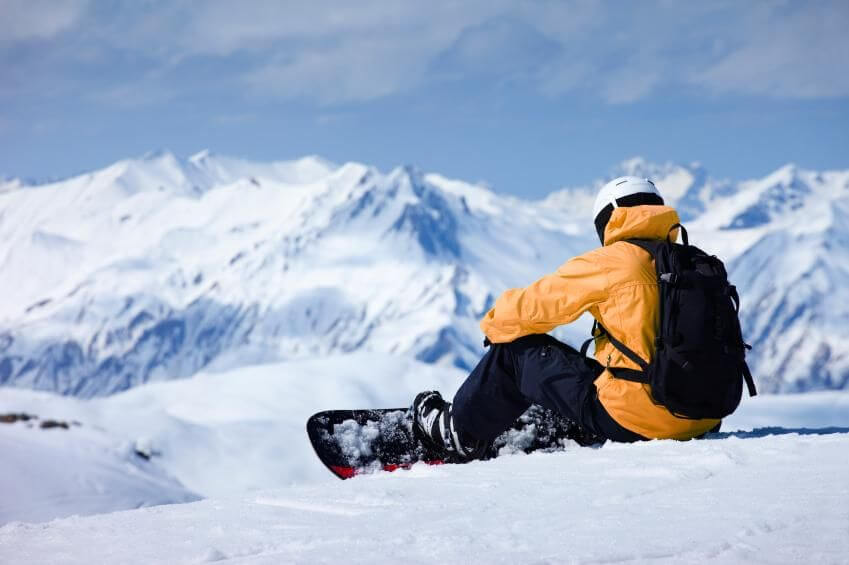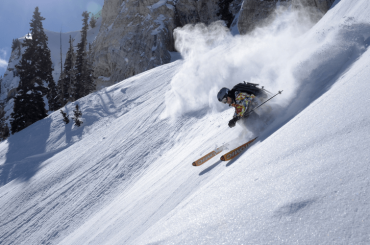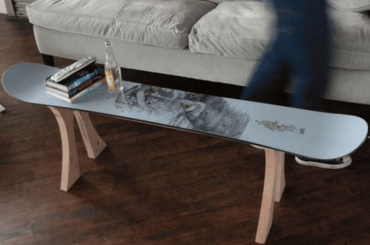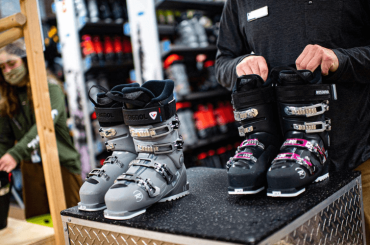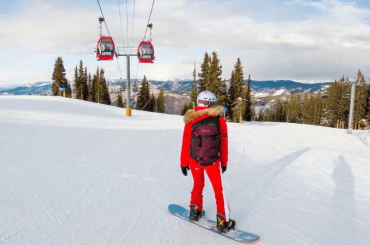If you’re a snowboarder, then you know that your feet take a beating. But what’s the reason behind all the pain?
In this blog post, we’ll explore some of the reasons why your feet might hurt after a day on the slopes. By understanding the cause of your pain, you can take steps to prevent it from happening again.
Why feet hurt when snowboarding?
There are a few possible reasons why your feet might hurt when snowboarding.
It could be that you’re not wearing the right kind of socks or boots or it could be that you have flat feet. If you have flat feet, then it’s especially important to make sure that you’re wearing the right kind of socks and boots. Otherwise, you might end up with numbness, tingling or even pain in your feet.
Another possible reason for foot pain when snowboarding is that you’re not used to the cold temperatures. If this is the case, then it’s important to gradually acclimate yourself to the cold weather. Start by spending a few minutes outside in the cold and then work your way up to longer periods. Once your body gets used to the cold weather, you should start to feel less pain in your feet.
If you’re still experiencing foot pain after trying these tips, then it’s important to see a doctor. There could be a more serious problem, such as frostbite, that’s causing your pain. A doctor will be able to properly diagnose and treat any underlying conditions.
Are snowboard boots supposed to hurt?
One of the most common questions that people have about snowboarding is whether or not the boots are supposed to hurt. The answer is: it depends.
If you’re new to snowboarding, then it’s likely that your boots will feel a bit tight and uncomfortable at first. This is normal and it doesn’t necessarily mean that the boots are too small. Instead, it’s just a sign that you need to break them in.
As you continue to wear the boots, they should start to feel more comfortable. If they never start to feel comfortable, then the boots may be too small. In this case, you’ll need to buy a new pair of boots that fit better.
If your feet are hurting while you’re snowboarding, it’s important to take a break and rest. It’s also a good idea to remove your boots and socks so that you can check for any blisters or other problems. If you find that you have a blister, make sure to properly clean and bandage it before continuing to snowboard.
In general, it’s important to listen to your body when you’re snowboarding. If something doesn’t feel right, then take a break and figure out what the problem is. With a little bit of care and attention, you can avoid most problems and injuries.
Why do my feet go numb in snowboard boots?
There are a few reasons why your feet might go numb in snowboard boots.
- The first is that the boots may be too tight. If your boots are too tight, they can cut off circulation to your feet, causing them to go numb.
- Another reason why your feet might go numb in snowboard boots is that you may be standing in one position for too long. If you are standing in one position for a long time, your feet can start to go numb.
- Finally, cold weather can also cause your feet to go numb. If it is cold outside, make sure to keep your feet warm by wearing socks and using hand warmers.
- If your feet go numb in snowboard boots, it is important to take a break and walk around. This will help increase circulation to your feet and prevent them from going numb. If your feet continue to go numb, you should see a doctor to check for circulation problems.
How do I stop my feet from hurting when snowboarding?
There are a few things you can do to stop your feet from hurting when snowboarding.
- The first is to make sure that your boots fit properly. If your boots are too tight, they can cause pain and discomfort.
- Another way to prevent foot pain when snowboarding is to wear proper socks. Wearing socks that are too thin can cause blisters and pain. It is important to find a sock that is thick enough to protect your feet but not so thick that it makes your boots uncomfortable.
- Finally, you can also try using foot pads or other devices to help relieve pressure on your feet. If you have any problems with your feet, be sure to see a doctor before going snowboarding.
FAQs – Feet Hurt While Snowboarding
How do I strengthen my feet for snowboarding?
- Wear boots that fit well and support your feet and ankles.
- Make sure your bindings are set correctly so that your feet are not slipping around inside your boots.
- Work on your balance by standing on one foot or doing balancing exercises.
- Practice jumping and landing on your snowboard to build up the muscles in your feet and ankles.
- Stretch your feet and ankles before and after riding.
How can I make my snowboard boots more comfortable?
There are a few things you can do to make your snowboard boots more comfortable.
- First, make sure you have the right size of boots. If they’re too big or too small, they’ll never be comfortable.
- Second, try different brands and see if one fits better than another.
- Third, use boot liners or footbags to help with fit and comfort.
- And finally, make sure your bindings are adjusted properly so they’re not putting too much pressure on your feet.
How tight should snowboarding boots be?
There is no definitive answer to this question since it depends on personal preference. However, most people agree that snowboarding boots should be tight enough to provide support and keep your feet from moving around inside the boot, but not so tight that they are uncomfortable or impede blood circulation.
It is generally recommended to err on the side of a tighter fit since this will provide more support and stability while riding. If you are unsure, it is always best to consult with a knowledgeable salesperson at your local snowboard shop.
What is the best exercise for snowboarding?
The best exercise for snowboarding is one that strengthens the legs and core muscles. This will help to improve your balance and stability while riding.
Squats, lunges and leg lifts are all good exercises to help build strength in these areas. Pilates and yoga are also great for improving flexibility and strengthening the core muscles.
If you are unsure about what exercises to do, it is always best to consult with a qualified personal trainer or your doctor before beginning any new workout routine.
Conclusion
Foot pain is a common complaint among snowboarders. While there are many potential causes of foot pain, understanding the basics of how your feet work can help you prevent and treat common complaints.
In addition to following general best practices for foot care, such as wearing well-fitting shoes and socks, taking breaks and stretching regularly, specific exercises can help improve strength and flexibility in your feet.
If you experience foot pain while snowboarding, be sure to consult with a physician or physical therapist to determine the cause and get appropriate treatment.

